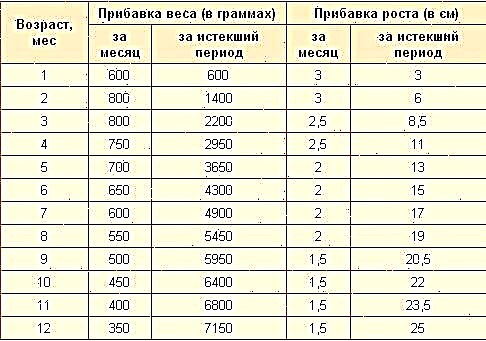
A general blood test can be called the most common clinical test, which is taken in childhood and adulthood. Its indicators help to identify irregularities in the body and diagnose many diseases.
Norm
Before you find out if the indicators of the children's blood test are normal, you should find out which indicators are determined and what they are responsible for.
The general blood test determines:
- Erythrocytes. The so-called red cells, the most important function of which is the binding and transport of oxygen and carbon dioxide. In the hematology analyzer, additional parameters of erythrocytes are determined, such as the width of distribution (shows the difference between the largest and smallest cells) and the average volume. Like the indicator of the concentration of hemoglobin in the erythrocyte, these parameters are needed by hematologists in order to diagnose different types of anemia.
- Hemoglobin. It is a protein found in red blood cells that binds oxygen as well as carbon dioxide. In its structure, heme containing iron is isolated. It is due to the presence of heme in erythrocytes and blood red. The study determines how many grams of a given protein are in a liter of blood.
- Color indicator. A parameter calculated according to a special formula that shows how much hemoglobin is contained in an erythrocyte.
- Hematocrit. This indicator determines how much of all the blood cells make up, that is, it indicates the density of the blood.
- Reticulocytes. This is the name of young erythrocytes, the number of which is determined in ppm.
- Leukocytes. These are white blood cells that help protect the baby's body from various infections.
- Leukocyte formula. This is the name of the percentage of the types of leukocytes available in the child's body.
- Platelets. These blood cells are important for stopping bleeding in the event of vascular damage. These cells are also called platelets for their shape.
- ESR. This parameter shows how quickly blood cells settle, separating from the plasma.

Leukocyte formula includes:
- Neutrophils (cells containing granules to fight bacteria), which in normal analysis are segmented (more mature neutrophils, present in greater numbers) and stab (younger forms). Also, such forms of neutrophils as young (metamyelocytes) and myelocytes are isolated. These forms are immature and appear in the blood test for diseases.
- The second group of leukocytes are eosinophils, which also include granules, but do not respond to bacteria, but to allergens.
- Basophils, which also have granules, are present in small quantities in the blood. In the hematology analyzer, the GRAN parameter is determined, which takes into account all granular forms of leukocytes (basophils, eosinophils and neutrophils) at once.
- A large group of leukocytes are lymphocytes, which are responsible for immune responses. They react primarily to viral infections.
- The cells, called monocytes, absorb bacteria, dead cells, and other particles that need to be removed from the body.
- And one more type of leukocytes, presented in a very small amount, is called plasma cells. They form antibodies.
Normal values for each indicator differ at different ages of the child:
Normal leukocyte formula:
Reasons for deviations
Each indicator of the general blood test is analyzed separately.
Erythrocytes
When the red blood cell count is low, anemia is diagnosed. Its causes may be blood loss during trauma, poor protein and vitamins nutrition, fermentopathies, leukemia, or death of red blood cells due to hemolysis.
An increase in the number of red blood cells can indicate dehydration, erythremia, renal artery stenosis, as well as diseases that cause heart or respiratory failure.

Hemoglobin
Low hemoglobin levels are also diagnosed with anemia, which can be caused by both malnutrition and blood loss or congenital blood diseases.
If hemoglobin, on the other hand, is elevated, dehydration, kidney, lung, or heart disease affecting blood flow, and erythremia may be the cause.
Change the color indicator
The parameter will be increased in case of erythremia, heart failure, dehydration, respiratory failure.
Its decrease is observed with anemia and renal failure.
Leukocytes
An increase in the number of white blood cells (leukocytosis) may be physiologic. Such leukocytosis occurs within a few hours after eating, as well as some time after physical exertion (in infants after a prolonged cry) or emotional overload.

A pathological increase in leukocytes occurs when:
- Purulent-inflammatory diseases;
- Oncological processes, including leukemia;
- Injuries and burns if a large area of the body is damaged;
- Exacerbation of rheumatism;
- Postoperative recovery.
A decrease in the number of leukocytes (called leukopenia) is noted when:
- Infectious and viral diseases;
- Systemic lupus erythematosus and rheumatoid arthritis;
- Some forms of leukemia;
- The use of steroid drugs and cytostatics in the treatment of tumors;
- Hypovitaminosis;
- Radiation sickness.
Leukocyte formula
Separately, it should be noted the distribution among the forms of neutrophils:
- If more stab neutrophils are detected in the child's blood, and myelocytes and young neutrophils are also detected, the leukocyte formula is interpreted as a "left shift". It is typical for inflammatory and infectious diseases, acute blood loss, and intoxication.
- If the number of segmented neutrophils increases, this formula is called "right shift." Such an analysis can indicate the presence of a lack of folic acid or vitamin B12.
Platelets
The number of platelets will exceed the norm if the child has had the spleen removed or some other operation has been performed, as well as in case of physical fatigue, erythremia, cancer, anemia and inflammation.
If the platelets are less than normal, this may indicate hemophilia, heart failure, various infections, or aplastic anemia. Also, the number of platelets can decrease after blood transfusion, with disseminated intravascular coagulation and hemolytic disease in newborns, in premature babies and after taking certain medications.

ESR
The indicator decreases very rarely, but its increase is often evidence of an inflammatory process in the body.
E. Komarovsky's opinion on the blood test
A renowned pediatrician calls a blood test an ideal test because it quickly and cheaply answers questions about diagnosis. He considers the qualitative and quantitative determination of the state of blood cells to be very informative.

What do you need to consider?
First of all, moms and dads need to remember that the child's blood test values will differ from the norms established for adults. And if you were given a form with the results, the norms that usually indicate on such a form apply to adults. So you should not panic when you notice a large deviation in the numbers.
The results of the analysis may differ from the time of day and depend on the nutrition of the child, therefore it is traditionally recommended to take the analysis in the morning on an empty stomach, but this is not a mandatory measure, but rather a wish.
You should also be aware that not always in the blood test, all the indicators described above are determined. Sometimes there is no laboratory assistant (without him, the leukocyte formula is not determined), sometimes there is no equipment or reagents, sometimes the laboratory is overloaded. Mandatory indicators that are always determined are the amount of hemoglobin, the number of leukocytes and ESR.



